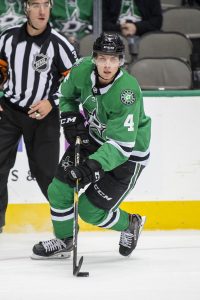The Dallas Stars will be without young defenseman Miro Heiskanen indefinitely after he was diagnosed with mononucleosis. Heiskanen has been placed on injured reserve retroactive to his last game played on March 2, meaning he will be able to be activated whenever he is ready to return.
Just 22, Heiskanen has taken over as arguably the most important player on the Stars roster, averaging nearly 25 minutes a night while playing in all situations. Without him, the Stars played last night with almost just four defenders, giving Joel Hanley and Thomas Harley fewer than ten minutes each. The top four of Ryan Suter (28:51), Jani Hakanpaa (25:32), John Klingberg (23:36), and Esa Lindell (22:56) all played huge minutes in a losing effort against the Nashville Predators in one of the most important games of the year.
It’s Klingberg’s status that is so interesting now that Heiskanen is out. The pending free agent defenseman had been expected to be traded before the deadline, but over the last three games his ice time has exploded with the team desperately needing his offensive ability. If Dallas remains in the playoff run, it’s hard to justify trading Klingberg away until they have a more definite timeline on Heiskanen’s return.
Dallas now sits fifth in the Central Division, one point behind the Predators but still holds the second wild card spot in the west. The Edmonton Oilers, Vancouver Canucks, and Anaheim Ducks are hot on their heels, and without Heiskanen in the lineup, it will be all the more difficult to stay in that spot.
